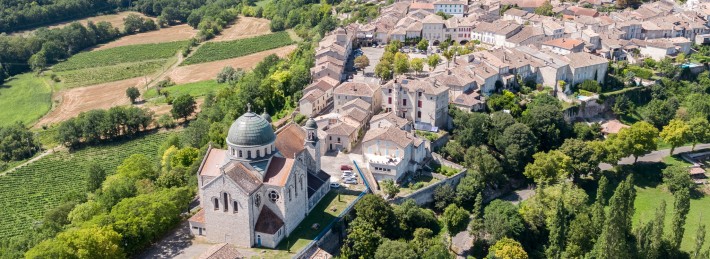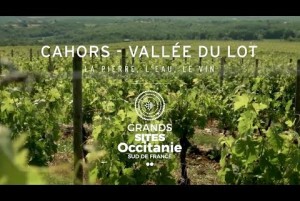Pretty villages in the Lot Valley
OUR pretty villages
AUJOLS
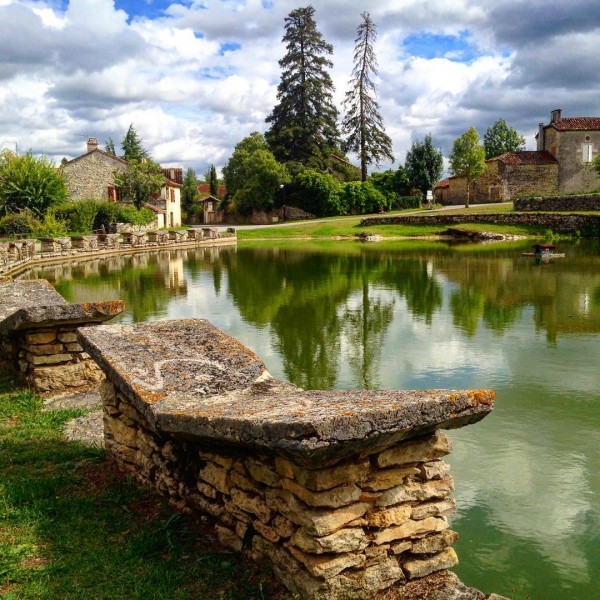
Aujols is the village known for its small man-built heritage. Discover the square with its typical Quercy ‘butterfly’ wash house, called this because of its practical shape for the washerwomen. The wash stones are placed in the form of a V and are typical of the Limogne heaths (Causse de Limogne). Equally to be found, amongst others, in the villages of Limogne-en-Quercy, Varaire, Escamps, Saillac. A hiking circuit ‘wells and wash houses’ can be walked from Aujouls, discover the specific local heritage, truffle farms, cazelles (small dry-stone huts) and of course wells and wash houses…
ALBAS
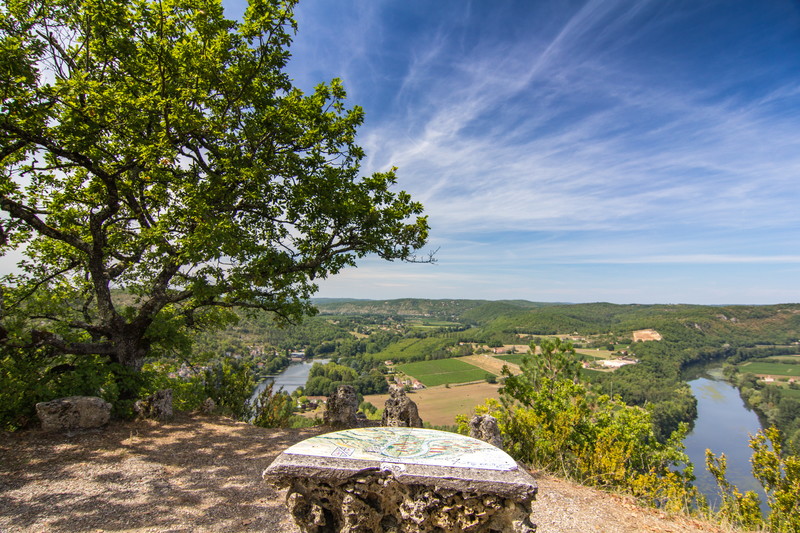 A very beautiful village in the Lot Valley, benefiting from an excellent location close to the vineyards and the river. This episcopal village, a former ‘castrum’ (fortified settlement), is built on a rocky spur cliff-top dropping sheer into the water and honeycombed by caves. From the 11th century, the ancient castle, set upon the cliff top, was a strategic point to keep a close watch over the Lot River and to guard against enemy attacks. It was one of the residency’s owned by the Lord Bishops of Cahors. Albas a peaceful village where a real lifestyle is present, home to the Cahors wine, it really deserves its name of ‘Pretty Albas”.
A very beautiful village in the Lot Valley, benefiting from an excellent location close to the vineyards and the river. This episcopal village, a former ‘castrum’ (fortified settlement), is built on a rocky spur cliff-top dropping sheer into the water and honeycombed by caves. From the 11th century, the ancient castle, set upon the cliff top, was a strategic point to keep a close watch over the Lot River and to guard against enemy attacks. It was one of the residency’s owned by the Lord Bishops of Cahors. Albas a peaceful village where a real lifestyle is present, home to the Cahors wine, it really deserves its name of ‘Pretty Albas”.
CASTELNAU-MONTRATIER, HISTOIRE D'UNE BASTIDE
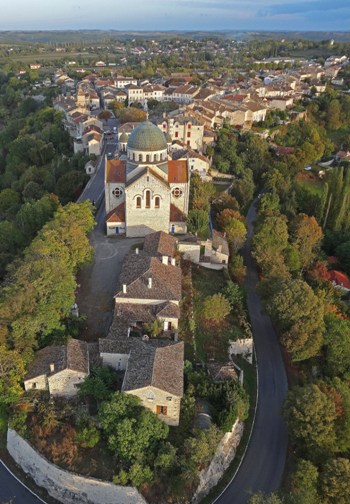
The bastide of Castelnau-Montratier stretches along a rocky promontory, the unusual cupola of its church, pointing skywards, can be seen from afar.
Remains found here show that human occupation goes back to the Gallo-Roman period. Towards the 10th century a first ‘stone keep’ was built on the Maurélis mount about 1.5 km from the village.
In the mid-11th century a ‘new castle’ named Castelnau-de-Vaux was built on the peak dominating the Lupte valley. Simon de Montfort had the castle destroyed in 1214 during the Albigensian crusade.
In 1250, Lord Ratier undertook the reconstruction of the town and gave it his name. It is built on the specific plan of a bastide - new towns of the Middle-Ages - it is organised around an imposing central square surrounded by arcades (today the Place Gambetta), a church on the outskirts and straight, parallel streets.
Over time the ‘Barries’, or districts, developed on each side of the straight road (today Rue Clémenceau). A second battlement encircled the town, except at the south, and it could be entered by five gateways.
Castelnau-Montratier possesses some particularly remarkable historical buildings:
- La Maison des Consuls (The Consuls’ House), today the town hall, was used by the Council magistrates from where they governed the town in the 15th century. The belfry was added in the 18th century.
- La Maison Jacob (Jacob House), an imposing building, dating from the 13th century situated on the Gambetta Square was donated by its owner Pierre Jacob, a naval officer, in the 18th century.
- The church of Saint-Martin of Romano-Byzantine style was rebuilt at the end of the 19th century on the ruins of the former Romanesque church. The dome was installed in 1935-1936. This church houses stained glass and rose windows representing the life of Saint-Martin, the Virgin Mary and Saint-Joseph.
- The three windmills proudly aligned at the entrance of the village, are witness to a rich and prosperous past.
- Two wash houses, dry-stone walls, a few fountains (springs) represent a small rural man-built heritage, that today are the object of restoration and conservation by local volunteers.
In the narrow streets, we can also admire some beautiful ancient doors, half-timbered houses and architectural details partially or fully intact.
CABRERETS
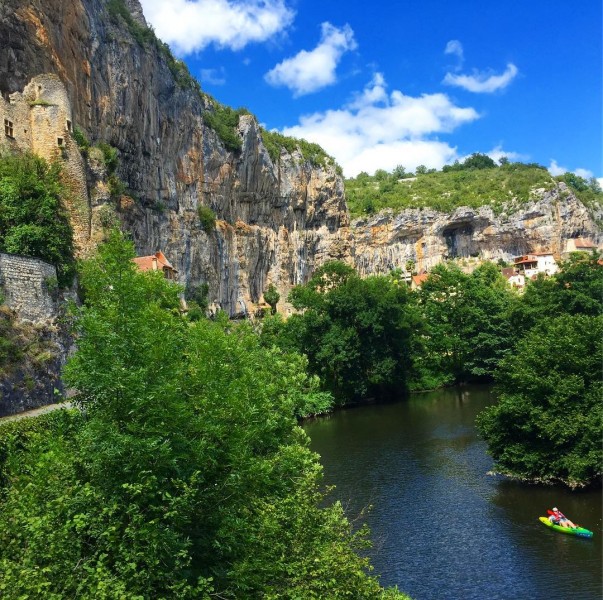 Nestled in the cliff hollows of the Célé Valley, a mere 10 kilometres from Saint-Cirq Lapopie, the village of Cabrerets is really worth the detour. At its foot runs a river, ideal for outdoor leisure activities such as canoeing, swimming, fishing for example! Remarkable cliffs surround you and also offer breath-taking views from the viewpoint (from the village follow the yellow signposting). On your way back down, can be seen some semi-troglodyte housings (one wall is built into the cliff face), they are all privately owned, but can be admired from the outside. Cabrerets is especially renowned for its celebrated cave ‘Pech Merle’, not to be missed with its prehistoric paintings and engravings more than 29.000 million years old. And importantly one of the last authentic caves that can be visited in France !
Nestled in the cliff hollows of the Célé Valley, a mere 10 kilometres from Saint-Cirq Lapopie, the village of Cabrerets is really worth the detour. At its foot runs a river, ideal for outdoor leisure activities such as canoeing, swimming, fishing for example! Remarkable cliffs surround you and also offer breath-taking views from the viewpoint (from the village follow the yellow signposting). On your way back down, can be seen some semi-troglodyte housings (one wall is built into the cliff face), they are all privately owned, but can be admired from the outside. Cabrerets is especially renowned for its celebrated cave ‘Pech Merle’, not to be missed with its prehistoric paintings and engravings more than 29.000 million years old. And importantly one of the last authentic caves that can be visited in France !
LA TOULZANIE
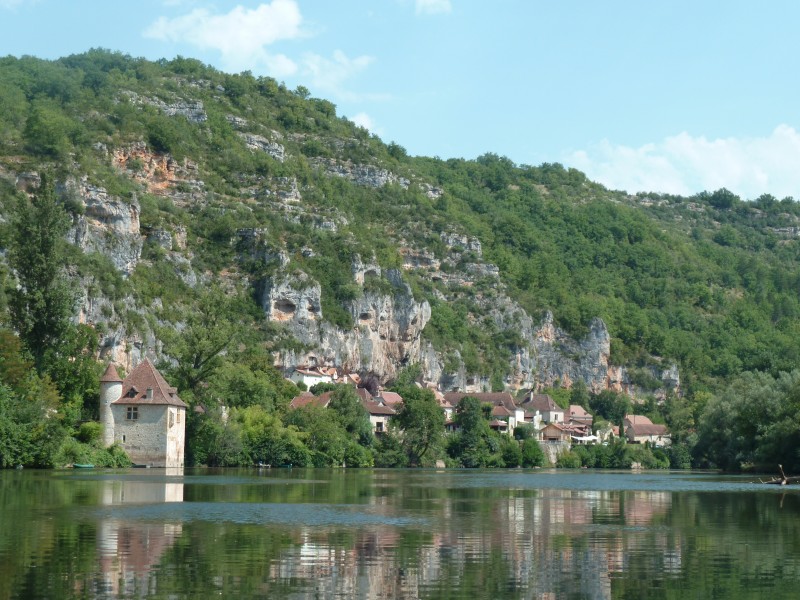 The Toulzanie is a small hamlet of the village of Saint-Martin Labouval. It is located on the road running from Cajarc to Saint-Cirq Lapopie. Its particularity? Troglodyte houses with a wall in the cliff! Like Cabrerets, they can’t be visited, but admired from the outside. The most beautiful view? The one from the river. For that, you can either rent a boat for the day at Bouziès for example or rent a canoe or a pedal boat from the water sports centre at Cénevières.
The Toulzanie is a small hamlet of the village of Saint-Martin Labouval. It is located on the road running from Cajarc to Saint-Cirq Lapopie. Its particularity? Troglodyte houses with a wall in the cliff! Like Cabrerets, they can’t be visited, but admired from the outside. The most beautiful view? The one from the river. For that, you can either rent a boat for the day at Bouziès for example or rent a canoe or a pedal boat from the water sports centre at Cénevières.
LUZECH
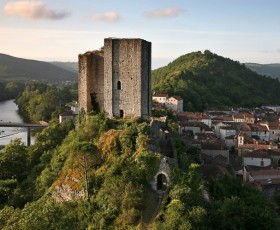
The medieval town of Luzech is a penisula forming one of the most spectacular sites of the Lot Valley. The rocky spur of its backbone, dominated by the Impernal and Pistoule hills is cut by the narrow isthmus modelled by the river. The lowlands are found in the loop of the meander, facing the abrupt Cevennes of Teulettes. On the emplacement of an ancient canal (dug to avoid having to take the complete tour of the meander), can be found the central square of the village.
The Impernal Oppidum
At the northern end of Luzech, the rocky promontory of the Impernal dominates the Lot Valley. Many excavations have taken place since E. Castagne discovered the site in 1872. They have brought to light three areas of building structures.
MONTCABRIER
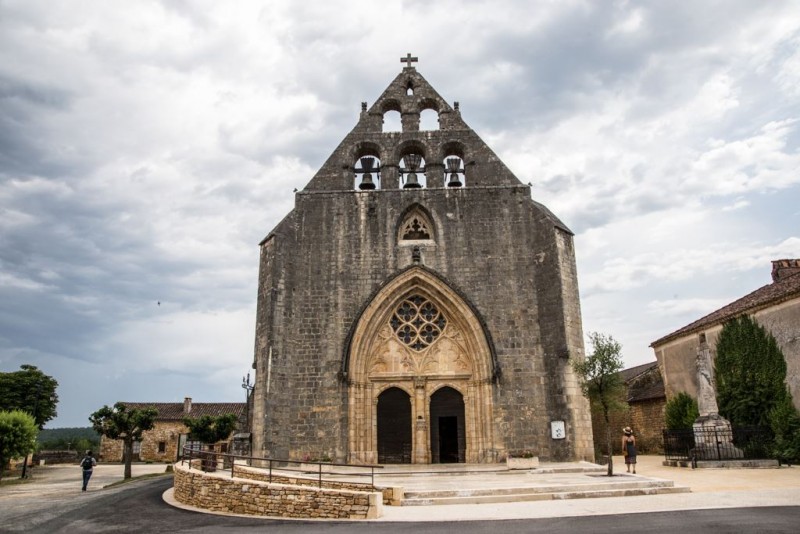
When travelling the Way of Saint James via Rocamadour, the walker arrives in Montcabrier. This fortified royal bastide, founded in 1298 by Philippe the Bel has conserved its orthogonal tracings, organised around a square, lined by houses from between the 14th and 16th centuries. Below the village the cliffs offer a site for rock-climbing greatly appreciated by both the experienced and the beginners.
VERS
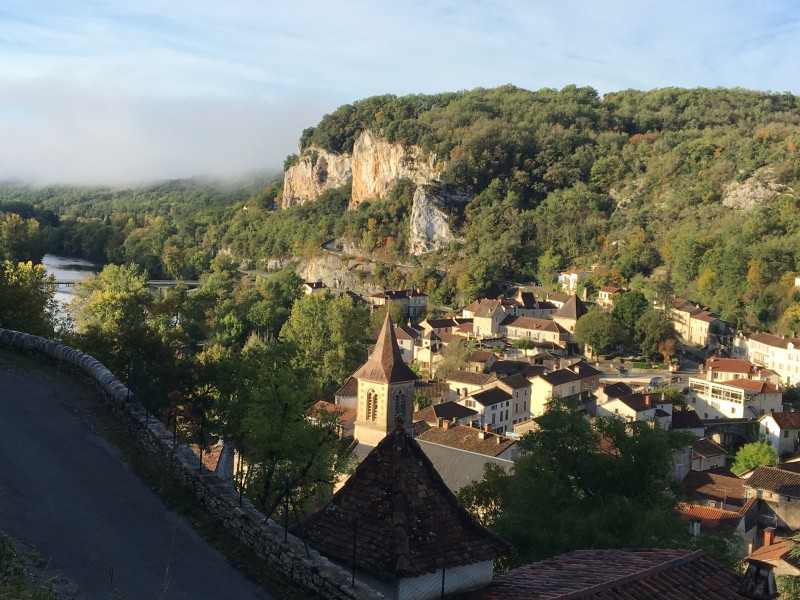 The pretty village of Vers (Saint-Géry-Vers) is at the confluence of the Vers stream and the Lot River. Surrounded by beautiful cliffs, look up and discover the English Keep (just like in Cabrerets or Bouziès) and at the exit in the direction of Cahors the Chapel of Velles. There also existed a Roman aqueduct built into the rock allowing the transport of drinking water to Cahors. The village is also a crossroads for the Saint James’ Ways between the GR®46 coming from Rocamadour and the GR®36 from Bouziès-Saint-Cirq Lapopie.
The pretty village of Vers (Saint-Géry-Vers) is at the confluence of the Vers stream and the Lot River. Surrounded by beautiful cliffs, look up and discover the English Keep (just like in Cabrerets or Bouziès) and at the exit in the direction of Cahors the Chapel of Velles. There also existed a Roman aqueduct built into the rock allowing the transport of drinking water to Cahors. The village is also a crossroads for the Saint James’ Ways between the GR®46 coming from Rocamadour and the GR®36 from Bouziès-Saint-Cirq Lapopie.
THE BASTIDES
During the 13th and 14th centuries ‘new towns’ are built all over the southwest of France following a specific plan: a central square surrounded by arcades, a church on the outskirts and a parcelled checkerboard construction plan of straight parallel streets with houses and gardens. Many bastides are still scattered here and there over our territory. Go out on a bastide hunt, they’ve been waiting a long time. The most interesting: Castelnau-Montratier, Labastide-Marnhac, Beauregard, Castelfranc, Labastide-du-Vert…
THE MOST RENOWNED VILLAGES OF THE LOT VALLEY
SAINT-CIRQ LAPOPIE
A breath away from Cahors, Saint-Cirq Lapopie elected ‘the 1st Preferred Village of the French’ overlooking the Lot River from a height of 100 metres, offers itself up to you. Saint-Cirq Lapopie proudly accumulates its honours: 13 historical monuments, ranked the ‘Most Beautiful Village of France’ and most importantly, the seduction of each visitor.
In lanes haphazardly created through its history, between houses dating from the 12th to 15th centuries you’ll plunge directly into the Middle Ages. Also a village of artists from today and yesteryear, André Breton, leader of the Surrealists is the most renowned amongst them. Like him, you’ll be captivated by this village and can confirm in unison ‘I’ve ceased wishing myself elsewhere’.
THE TOWPATH
And whilst you’re here why not take the fascinating tow path at the bottom of the village. It proposes a walk of no more than 5 kilometres along the river bank, part of which is carved into the cliff face, with a few metres decorated by a bas-relief evoking the aquatic life of the Lot. It’s flat, it’s easy, it’s shady and above all it’s magnificent !
>> Find out more…
PUY-L'ÉVêque
Built upon a rocky spur, the medieval city can be discovered on foot via the signposted circuit and by the river on a flat-bottomed river barge. It’s medieval dwellings in ochre-coloured stone stand alongside more recent constructions, such as the hanging gardens. At the exit of the town, et yourself be surprised by the savoir faire of the porcelain manufacturer Virebent, a living heritage business.
>> Find out more…
MONTCUQ
This pretty village in the Quercy Blanc is worth your attention for many reasons. To start with because of Nino Ferrer, French singer, songwriter emblematic of the 1960’s. The village is inspiring because of the many artists and craftspeople who settle here.
Montcuq can be visited by following the signposted walk which takes you step-by-step through the medieval alleyways: buildings with geminate windows, arcaded and half-timbered facades, remarkable doors and lintels – a wealth of detail telling here and there the turbulent history of the village and describing its particular charm.
The church of Saint-Hilaire, built at the end of the 12th century and altered in the 18th century, houses a group of stained-glass windows in vibrant colours retracing the lives of Christ and Saint-Hilaire.

